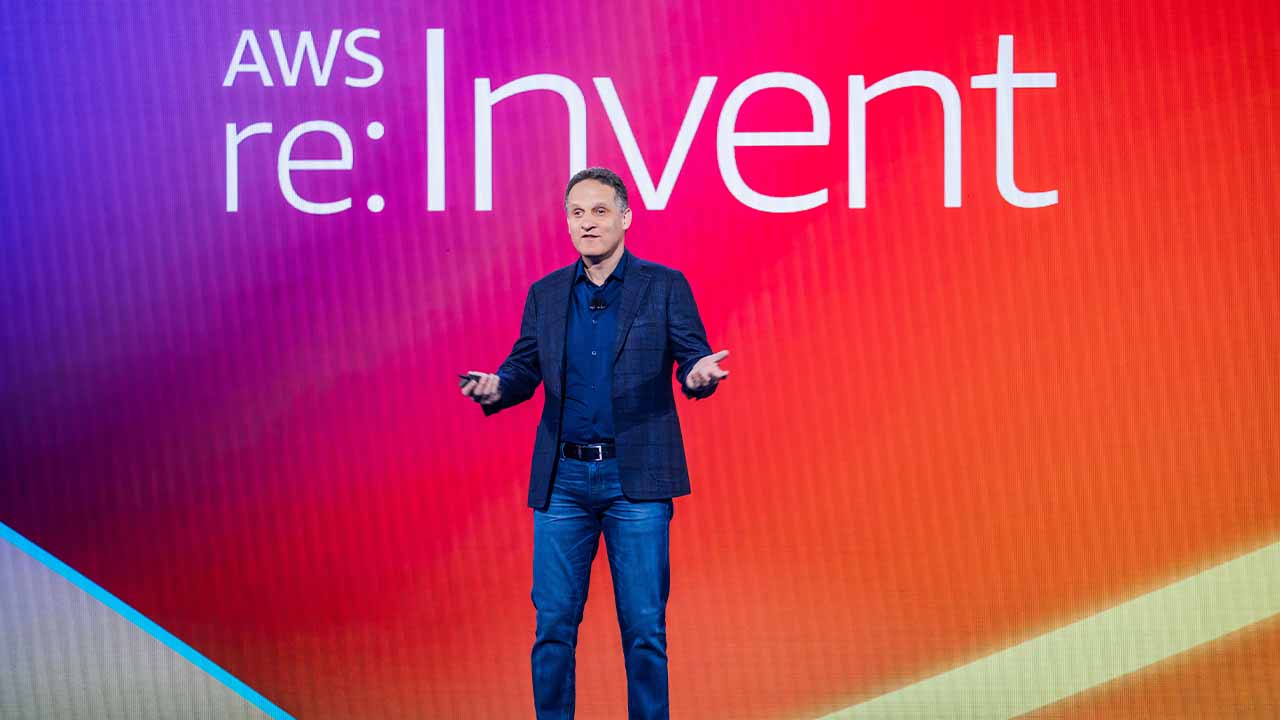Amazon, which many of us know with its shopping platform, is actually one of the basic building blocks of the internet as we know it. Through its service, known as Amazon Web Services, or AWS, the company serves thousands of institutions, from startups to gigantic Enterprises. Finally, the company announced its new technologies and services that will increase the speed, quality and efficiency of its service at the Keynote 2022 event.
Amazon introduces new EC2 instances C7gn, R7iz and Hpc7g
C7gn Instances are designed for your most network-intensive workloads, such as network virtual appliances, data analytics, and tight-knit cluster computing. Powered by AWS Graviton3E processors, these servers support up to 200 Gbps of network bandwidth along with 50 percent higher packet processing performance. c7gn instances will be available in multiple sizes, up to 64 vCPUs and 128 GiB of memory.
Hpc7g Instances are also powered by AWS Graviton3E processors and have up to 35 percent higher vector instruction processing performance than Graviton3. Giving you the best price/performance for tight-connected, compute-intensive HPC (high-performance computing) and distributed computing workloads, and 200 Gbps dedicated network bandwidth optimized for traffic between instances in the same VPC (virtual instances) they were designed to. hpc7g instances will be available in multiple sizes up to 64 vCPUs and 128 GiB of memory.
R7iz Instances are powered by the latest 4th generation Intel Xeon Scalable Processors (codenamed Sapphire Rapids) and run continuously at an all-core turbo frequency of 3.9GHz. With high performance and DDR5 memory, these instances are the perfect choice for your Electronic Design Automation (EDA), financial, statistical and simulation workloads. They’re also great servers for relational databases and other commercial software licensed per core. r7iz instances will be available in multiple sizes up to 128 vCPUs and 1 TiB of memory.
Amazon Omics – A purpose-built service to store, query and analyze genomic and biological data at scale
Amazon Omics, a purpose-built service to help biocomputers, researchers, and scientists store, query, and analyze genomic, transcriptomic, and other omics data, and then generate insights from that data to improve health and advance scientific discovery, is now generally available.

With a few clicks in the Omics console, you can export and normalize petabytes of data into formats optimized for analysis. Amazon Omics provides scalable workflows and integrated tools to prepare and analyze omics data, and automatically provision and scale core cloud infrastructure. So you can focus on advancing science and turn discoveries into diagnoses and therapies.
Amazon Connect – New ML-Powered Features to Improve Forecasting, Capacity Planning, Scheduling, and Agent Efficiency
Amazon Connect is an easy-to-use cloud contact center that helps companies of all sizes deliver superior customer service at a lower cost. If you’ve been following our Amazon Connect announcements, you may have noticed that we continue to add more and more machine learning (ML)-powered features to Amazon Connect. ML is already making Amazon Connect smarter at analyzing conversations in real time, finding relevant information needed by contact center agents, and authenticating customers with their voice.
Also, new ML-powered features for Amazon Connect are now generally available. Announced in Enterprise Connect in March 2022, Amazon Connect forecasting, capacity planning and scheduling features are now generally available! Contact Lens for Amazon Connect also adds conversational analytics to chat, extending ML-powered analytics from voice-based customer interactions to chat interactions.
Contact Lens for Amazon Connect adds evaluation forms for agent performance, helping administrators create evaluation forms that can be automatically scored by Contact Lens’s machine learning-powered speech analytics. The Amazon Connect agent workspace offers a new step-by-step guidance experience that helps agents resolve customer issues.
AWS SimSpace Weaver – Run Large Scale Spatial Simulations in the Cloud
Amazon also announced AWS SimSpace Weaver, a new compute service for running real-time spatial simulations in the cloud and at scale. With SimSpace Weaver, simulation developers will no longer be limited to the computing and memory of their hardware.
Organizations run simulations for situations that are rare, dangerous, or very expensive to test in the real world. For example, city managers cannot wait for a natural disaster to occur in the city to test their response systems. Event planners don’t want to wait until a major sporting event to understand the impact of matches on traffic. Such scenarios need to be simulated in a secure environment where planners can test different situations and adjust each system accordingly.
To date, spatial simulations have generally been limited to running on a single piece of hardware. If developers wanted to simulate a larger and more complex world with many independent and dynamic entities, they had to use a larger computer. Simulation developers had to balance scale and fidelity—in other words, deciding how big the world would be and how many independent entities would be in it.
The scenarios that developers want to simulate are as complex as the world we live in. An example of this would be simulating how traffic would be affected by a major concert or sporting event. Simulating these events requires modeling hundreds of thousands of independent dynamic entities to represent people and vehicles. Each entity has its own set of behaviors that must be modeled as it moves through the world and interacts with other entities. Simulating this on a real-world scale requires CPU and memory beyond what you can have in a cloud server.
With SimSpace Weaver, you can run simulations at scale across multiple Amazon Elastic Compute Cloud (Amazon EC2) instances. SimSpace Weaver supports simulating more than one million independent and dynamic assets.
Amazon EC2 Hpc6id Instances Optimized for High Performance Computing
General availability of Amazon EC2 Hpc6id instances, a new instance type built specifically for tight-connected HPC (high-performance computing) workloads. Amazon EC2 Hpc6id instances feature 3rd Gen Intel Xeon Scalable processors (Ice Lake) running at frequencies up to 3.5 GHz, 1024 GiB memory, 15.2 TB local SSD disk, and 200 Gbps Elastic, 4x higher than R6i instances Supported by Fabric Adapter (EFA) network bandwidth.
Amazon EC2 Hpc6id instances have the best HPC performance per vCPU compared to comparable x86-based EC2 instances for data-intensive HPC workloads.
Amazon Security Lake – Purpose-Built Customer Data Lake Service
Announced a preview release of Amazon Security Lake, a purpose-built service that takes an organization’s security data from the cloud and on-premises sources and centralizes it in a purpose-built data lake that is automatically stored in your account.
Amazon Security Lake automates centralized management of security data and tiering of storage by normalizing data from integrated AWS and third-party services, and managing the data lifecycle with customizable retention methods.
By reducing the operational burden of security data management, you can make it easier to collect more security signals from across your organization and analyze this data to improve the protection of your data, applications and workloads.
Integration of Amazon’s Redshift with Apache Spark
Amazon announced the general availability of the Amazon Redshift integration for Apache Spark, which makes it easy to build and run Spark applications on Redshift and Redshift Serverless, freeing up space for customers in their data warehouse for more in-depth AWS analytics and machine learning (ML) solutions.
With Amazon Redshift integration for Apache Spark, you can get up and running in seconds and effortlessly build Apache Spark applications in a variety of languages including Java, Scala, and Python.
Your applications can read and write from the Amazon Redshift data warehouse without compromising their performance or the transactional consistency of the data, and performance improvements with push-down optimizations.
Amazon Redshift integration for Apache Spark builds on an existing open-source connector project and enhances it in performance and security, helping customers achieve up to 10x faster application performance. We would like to thank those who actually contributed to the project by collaborating with us to make this happen. Amazon will continue to contribute back to the open source project as it makes more improvements
Amazon OpenSearch Serverless – Run Search and Analytics Workloads Without Managing Clusters
Amazon announced a preview release of a new serverless option for OpenSearch Service that makes it easy for customers to run large-scale search and analytics workloads without managing clusters. This option automatically provisioning and scaling essential resources to deliver fast data ingestion and query responses for even the most demanding and unpredictable workloads, eliminating the need to configure and optimize clusters.
With Amazon OpenSearch Serverless, you don’t have to take into account hard-to-predict factors such as the frequency and complexity of queries or the volume of data expected to be analyzed. Instead of dealing with managing the infrastructure, you can focus on using OpenSearch to explore and gain insights into your data. You can also start using familiar APIs to load data and query, and leverage OpenSearch Dashboards for interactive data analysis and visualization.
Meet Lambda SnapStart
Amazon has introduced Lambda SnapStart, which will let you use Lambda in even more ways. After enabling Lambda SnapStart for a given Lambda function, publishing a new version of the function triggers an optimization process.
This process initializes your function and runs it through the entire Init phase. It then takes an immutable, encrypted snapshot of the memory and disk state and caches it for reuse. When the function is called later, the state is retrieved from the cache in chunks as needed and used to fill the execution environment with data.
This optimization makes invocation time faster and more predictable, as creating a new execution environment no longer requires a dedicated Init phase. The company is rolling out Lambda Snapstart to support Java functions using the Corretto (java11) runtime and hopes it will be available immediately for applications using Spring Boot, Quarkus, Micronaut, and other Java frameworks. Enabling Lambda SnapStart for Java functions can make them start up to 10x faster at no additional cost.

